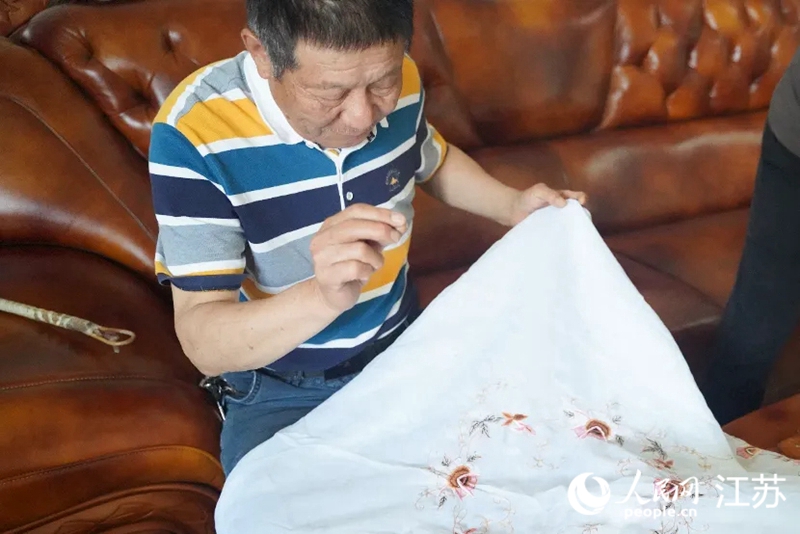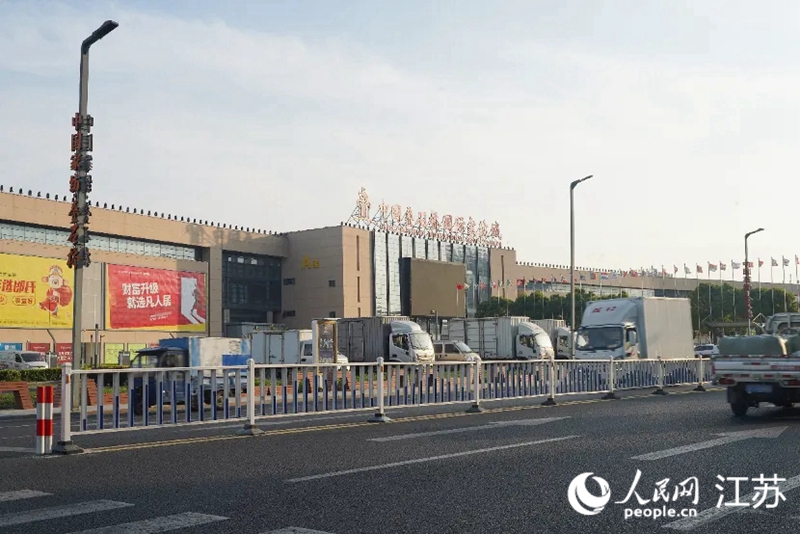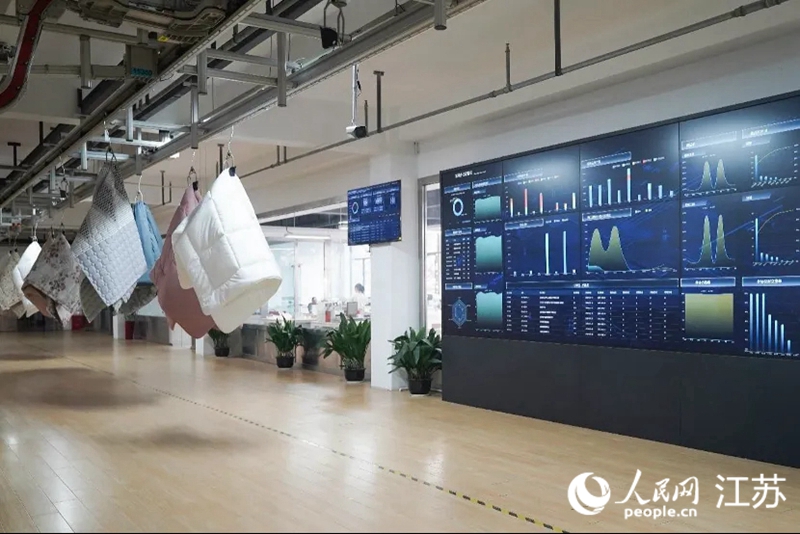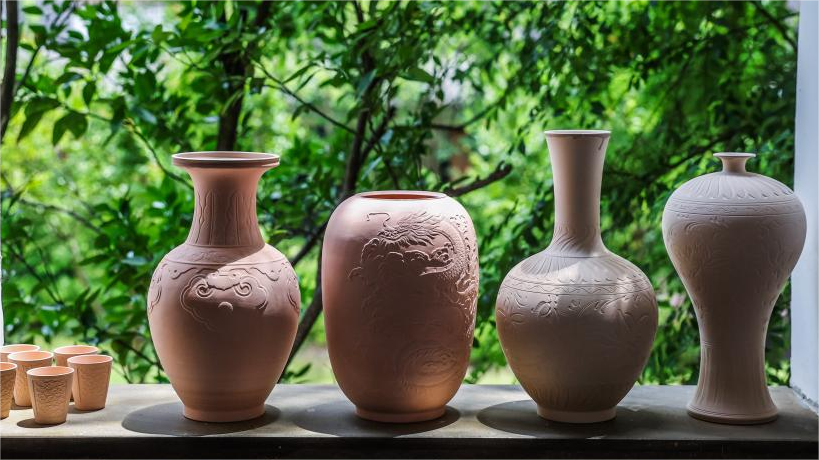Nantong in E China's Jiangsu nurtures strong growth in home textile industry
In the city of Nantong, east China's Jiangsu Province, production lines churn out 1,350 sets of bedding products, 670 quilts and 340 pillows every minute. The city annually produces over 1.2 billion bedding products. Last year, the combined turnover of Nantong's two major home textile markets reached 240 billion yuan ($33 billion).

Yu Jianyuan, one of the first villagers from Linxi village in Nantong's Haimen district to venture abroad to sell home textile products, showcases an embroidered piece he sold when starting his business operations. (People's Daily Online/Gao Chao)
The development of Nantong's home textile industry began in 1899 when renowned Chinese industrialist and educator Zhang Jian founded a cotton textile factory in the city.
In the 1950s and 1960s, local villagers set up stalls at both ends of Dieshi Bridge, selling commodities, including meat, vegetables, eggs, pillows and quilt covers.
In the 1980s, embroidery works emerged as hot-selling products in Nantong. By 1987, over 20 villages in Sanxing town, located near the bridge, had built embroidery factories.
In 1993, Yu Jianxiang, a villager from Linxi, a nearby village in Nantong's Haimen district, took 20 large bags of home textiles to sell in Russia, but the business failed. He then ventured to Romania, eventually establishing a presence there.
Over nearly 30 years, more than 600 Linxi villagers, from a population of over 3,500, went abroad for business. Today, Haimen district is the ancestral home of nearly 5,000 businesspeople living in over 40 countries and regions.
In the late 20th and early 21st centuries, many businesspeople from Nantong returned home to build factories, establishing brands like Luolai Home Textile Co., Ltd. and Lansiu Home Textile Co., Ltd. These factories drove the development of many other related industries, including yarn, fabrics, packaging and logistics.
Before e-commerce, Nantong produced half of China's home textiles. Today, about 70 percent to 80 percent of bed sheets, quilts and mattresses sold online are shipped from Nantong.

Photo shows the China Dieshiqiao Home Textile City in Nantong, east China's Jiangsu Province. (People's Daily Online/Gao Chao)
Nantong has risen to become one of the world's major home textile hubs. How was this possible? The answer lies in the city's complete home textile industrial chain.
After more than 40 years of development, Nantong has formed an all-encompassing modern industrial system covering cotton textile, chemical fiber, silk, printing and dyeing, home textile and clothing.
There are over 50,000 online shops in Nantong selling home textiles, collectively achieving annual sales of over 100 billion yuan.
"After the home textile industrial chain was established, our costs dropped drastically," said Zhou Jian, a Nantong entrepreneur.
In recent days, Zhou has frequently traveled between Nantong and northwest China's Xinjiang Uygur Autonomous Region. Days ago, he invested 2 billion yuan to build a printing and dyeing textile industrial park in Xinjiang, a major cotton producer, extending the chain there.

Data display screens are shown in an intelligent workshop at Lansiu Home Textile Co., Ltd. in Nantong, east China's Jiangsu Province. (People's Daily Online/Gao Chao)
Constantly pursuing innovation and refusing outdated ideas has transformed Nantong's home textile industry from weakness to strength.
In the 1990s, Nantong's home textile market had a mix of high- and low-quality products. However, in 1997, the city took a significant step, establishing a pioneering copyright management organization at the township level.
According to Shao Aijun, an inspector at Nantong International Home Textile Industrial Park, Nantong currently has a workforce of nearly 20,000 individuals involved in home textile fabric design, over 70 percent of the national total.
Photos
Related Stories
- Trending in China | Chinese linen
- Letter from China: China's textile capital weaves more vibrant future
- China's textile industry profits up 7.2 pct in 2023
- Trending in China | Chinese tie dye: Traditional textile dyeing method
- Pic story: inheritor of traditional Li textile techniques
- Merchants at the world's largest textile professional market upbeat about sales recovery
- Feature: U.S., Chinese textile communities excited about reuniting at key business platform
Copyright © 2024 People's Daily Online. All Rights Reserved.









